What plant cell part is shown here?
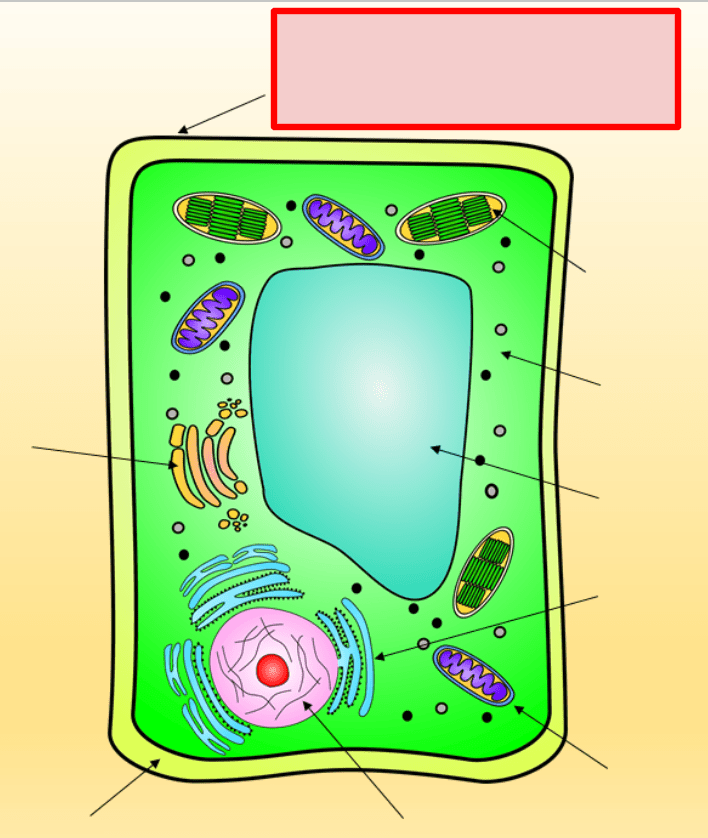
Cell wall!
This allows nutrients to pass into an animal cell and allows waste to exit.
What is a cell membrane?
What cell part is shown here?
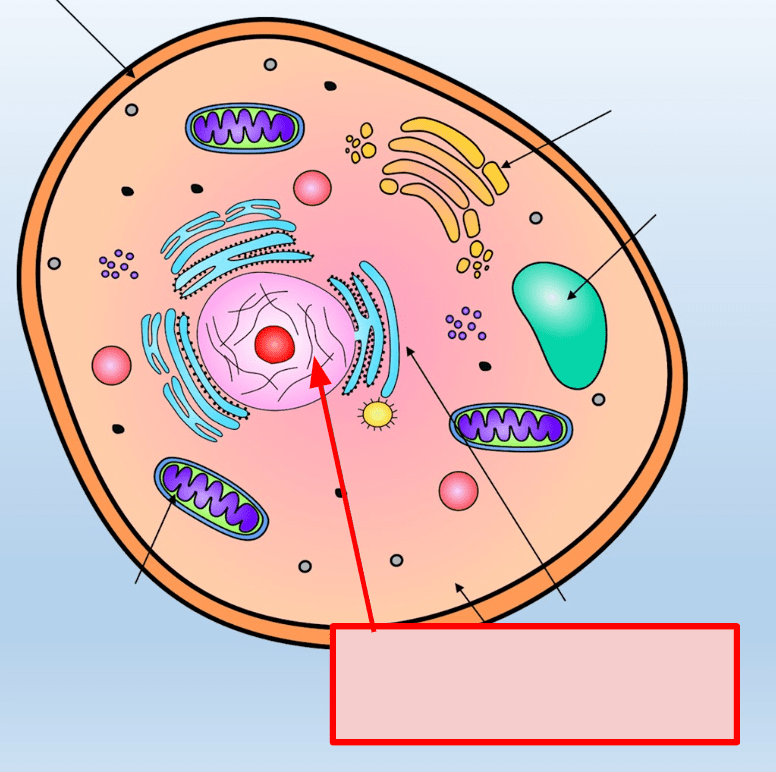
Nucleus!
Are microorganisms helpful or harmful?
Both!
What kind of a cell is this?
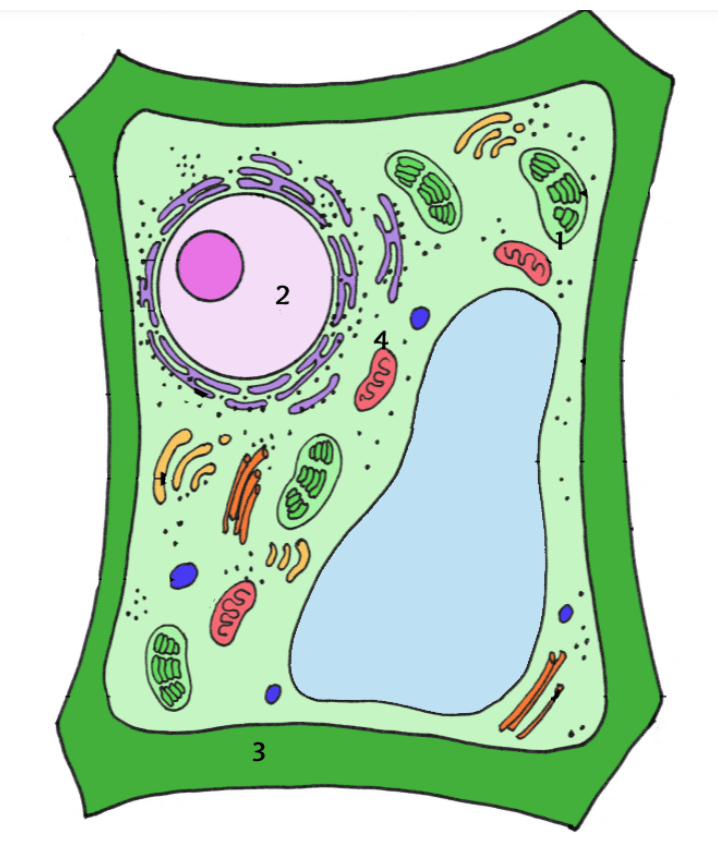
Plant cell!
Which organelle is part of a plant cell, but not part of an animal cell?
Chloroplasts
This organelle operates as the "brain" of the cell and contains the DNA.
What is a nucleus?
The pictures show the structure of two cells.
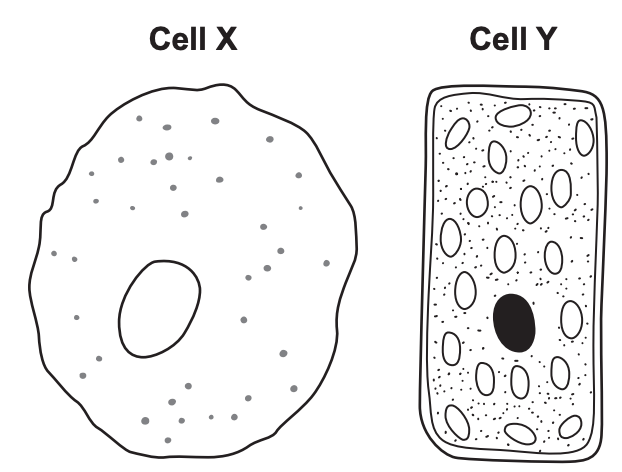
Which sentence explains why the shape and structure of the two cells are different?
A. Cell X is shaped like a circle because it is an animal cell, which means it does not have a cell wall, and cell Y is shaped like a rectangle because it is a plant cell, which means it has a cell wall.
B. Cell X is shaped like a circle because it is a plant cell, which means it does not have a cell wall, and cell Y is shaped like a rectangle because it is an animal cell, which means it has a cell wall.
C. Cell X is shaped like a circle because it is an animal cell, which means it has a cell membrane, and cell Y is shaped like a rectangle because it is a plant cell, which means it does not have a cell membrane.
D. Cell X is shaped like a circle because it is a plant cell, which means it has a cell membrane, and cell Y is shaped like a rectangle because it is an animal cell, which means it does not have a cell membrane.
A. Cell X is shaped like a circle because it is an animal cell, which means it does not have a cell wall, and cell Y is shaped like a rectangle because it is a plant cell, which means it has a cell wall.
A student collects a sample of pond water in a jar to observe the microscopic algae that live in the water. The student then places a drop of the pond water on a microscope slide and observes it under a microscope. The drawings show what the student observed in the jar and on the slide.
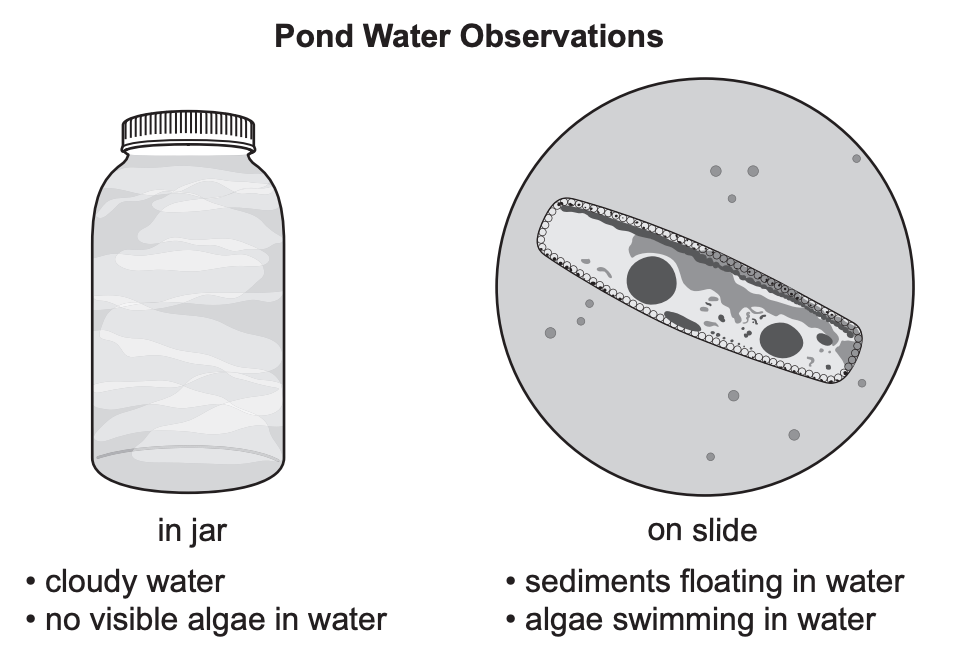
Which claim is supported by evidence in the drawings?
A. The student observed microscopic algae only on the slide because algae grow larger when placed on a microscope slide.
B. The student observed microscopic algae only on the slide because all of the algae cells were removed from the pond water on the microscope slide.
C. The student observed microscopic algae only on the slide because algae cells are too small to be seen without magnification by a microscope.
D. The student observed microscopic algae only on the slide because the water in the jar was too cloudy to see the algae.
C. The student observed microscopic algae only on the slide because algae cells are too small to be seen without magnification by a microscope.
What kind of cell does this picture show?

Animal cell!
This part of a plant cell gives it a rigid structure.
What is a cell wall?
This is the jelly-like substance that holds all organelles in place within the cell.
What is cytoplasm?

Which sentence describes how the differences between a plant cell and an animal cell can be determined by looking at the parts inside the cell?
A. Plant cells have a nucleus, but animal cells do not.
B. Plant cells have chloroplasts, but animal cells do not.
C. Plant cells do not have a nucleus, but animal cells do.
D. Plant cells do not have chloroplasts, but animal cells do.
B. Plant cells have chloroplasts, but animal cells do not.
What is this? Is it harmful or helpful?
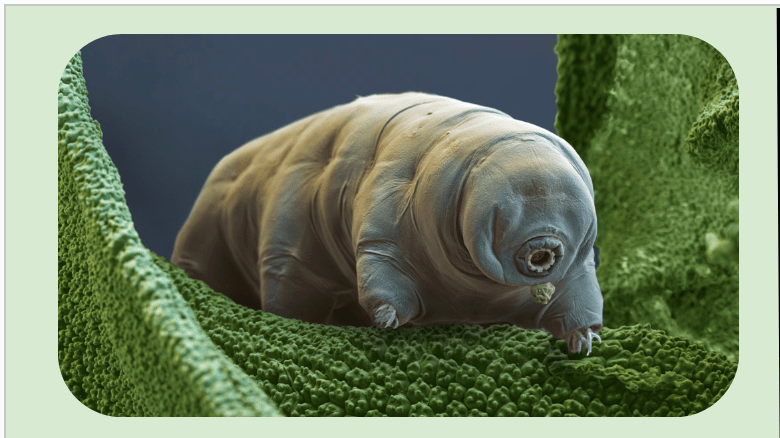
Tardigrade! They are helpful, or pose no threat to humans.
Salmonella is an example of what kind of microorganism?
A. Beneficial bacteria
B. Harmful bacteria
C. Beneficial protozoa
D. Harmful protozoa
B. Harmful bacteria
What part of a plant cell is shown here?

Nucleus!
 What animal cell part is shown here?
What animal cell part is shown here?
Cell membrane!
What kind of cell is shown here?

Animal cell!
A student observed a label found on raw chicken meat sold at the grocery store:
Warning: Cook thoroughly to kill bacteria.
Which argument should the student use to support a claim that some bacteria are harmful to humans?
A. Some bacteria can harm humans because bacteria reproduce faster when they are cooked at high temperatures.
B. Some bacteria can harm humans because bacteria become toxic when cooked at high temperatures.
C. Some bacteria can harm humans because bacteria make food taste bad when it is not cooked properly.
D. Some bacteria can harm humans because bacteria can cause food poisoning when contaminated food is not cooked properly.
D. Some bacteria can harm humans because bacteria can cause food poisoning when contaminated food is not cooked properly.
After a person takes an antibiotic to fight a bacterial infection in the body, some doctors recommend taking a pill called a probiotic every day. The list shows some facts about probiotics.
Facts about Probiotics
• They are made of living microorganisms.
• They improve food digestion and absorption of nutrients.
• They increase the body’s ability to fight infections.
• They increase the number and types of normal bacteria in the gut.
Which argument BEST supports the claim that humans benefit from taking probiotics?
A. Humans benefit from probiotics because probiotics prevent people from getting sick.
B. Humans benefit from probiotics because probiotics are made of living microorganisms.
C. Humans benefit from probiotics because probiotics can be taken every day after having an infection.
D. Humans benefit from probiotics because probiotics balance the number and types of bacteria that live in the gut.
D. Humans benefit from probiotics because probiotics balance the number and types of bacteria that live in the gut.
What part of a plant cell is shown here?
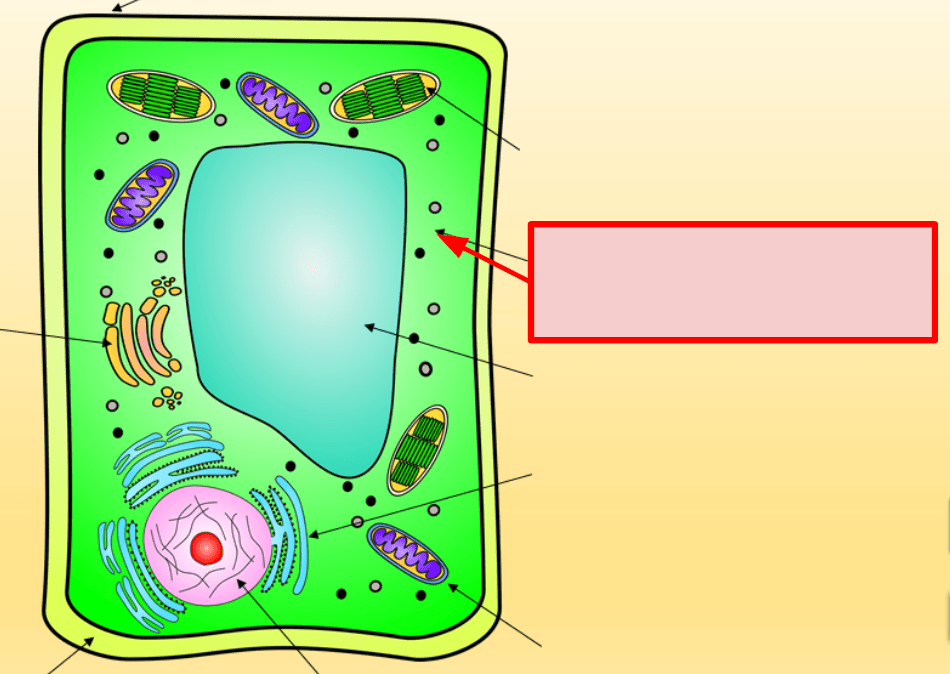
Cytoplasm!
Which organelle is described as the "powerhouse of the cell" AND why?
Mitochondria!
What kind of cell is shown here?
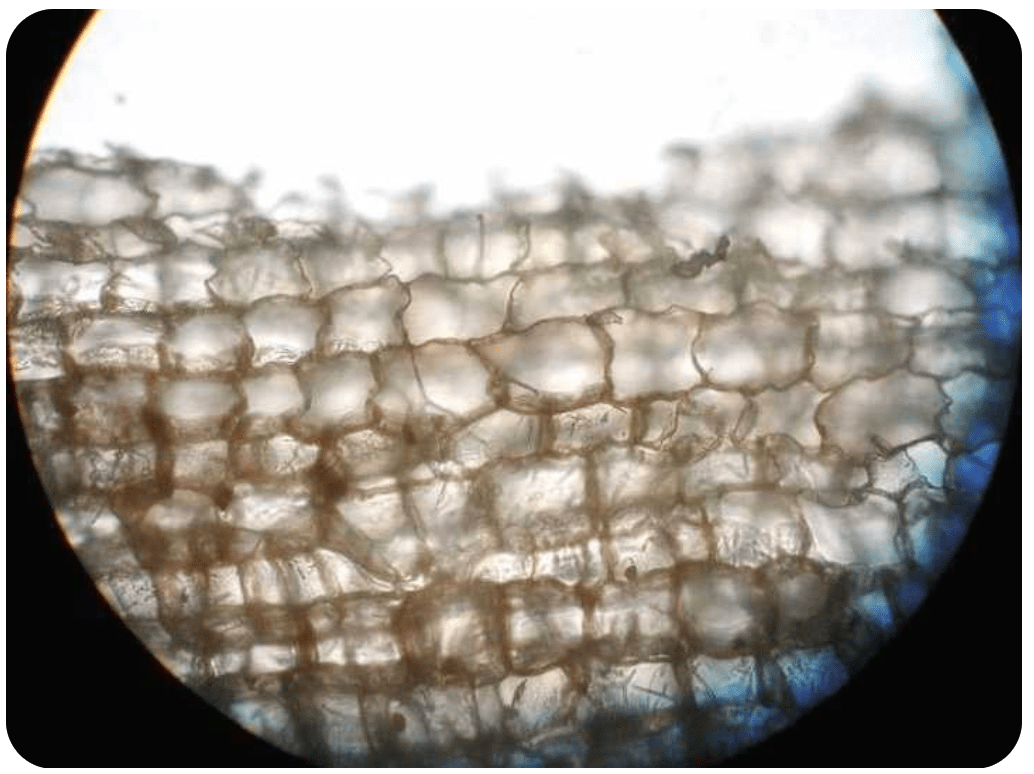
Plant cell!
Microorganisms play a vital role in the environment. This diagram shows how microorganisms play a vital role in what kind of cycling?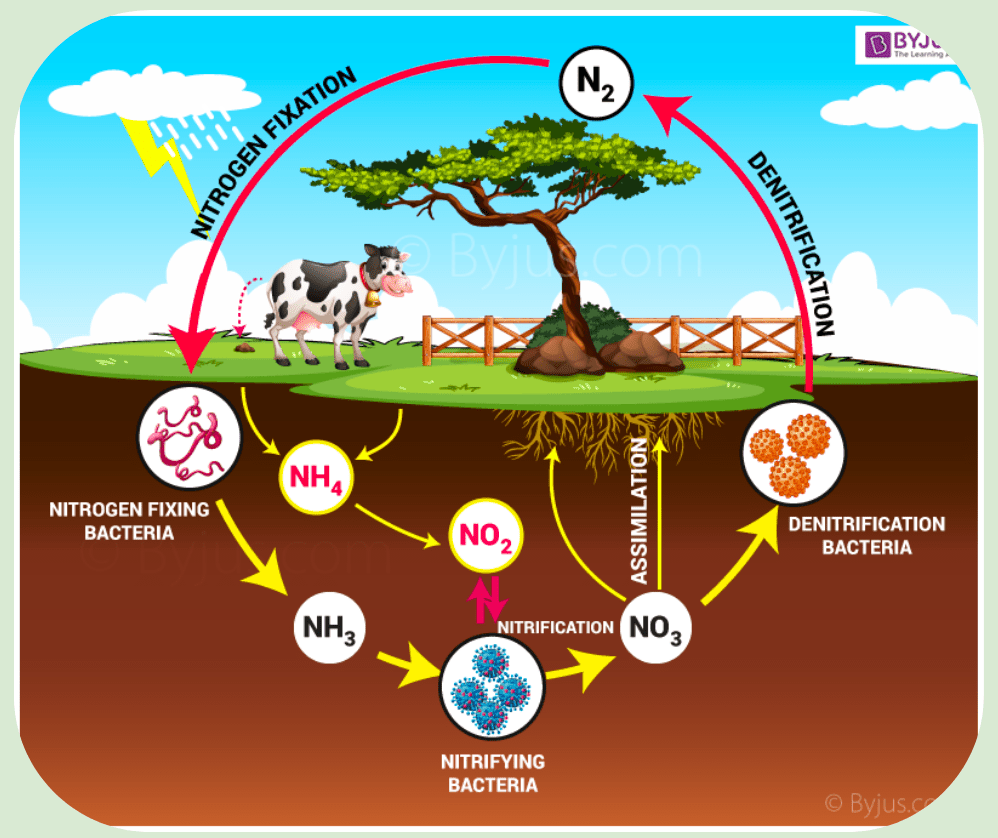
Nutrient cycling!
What do these four images have in common?
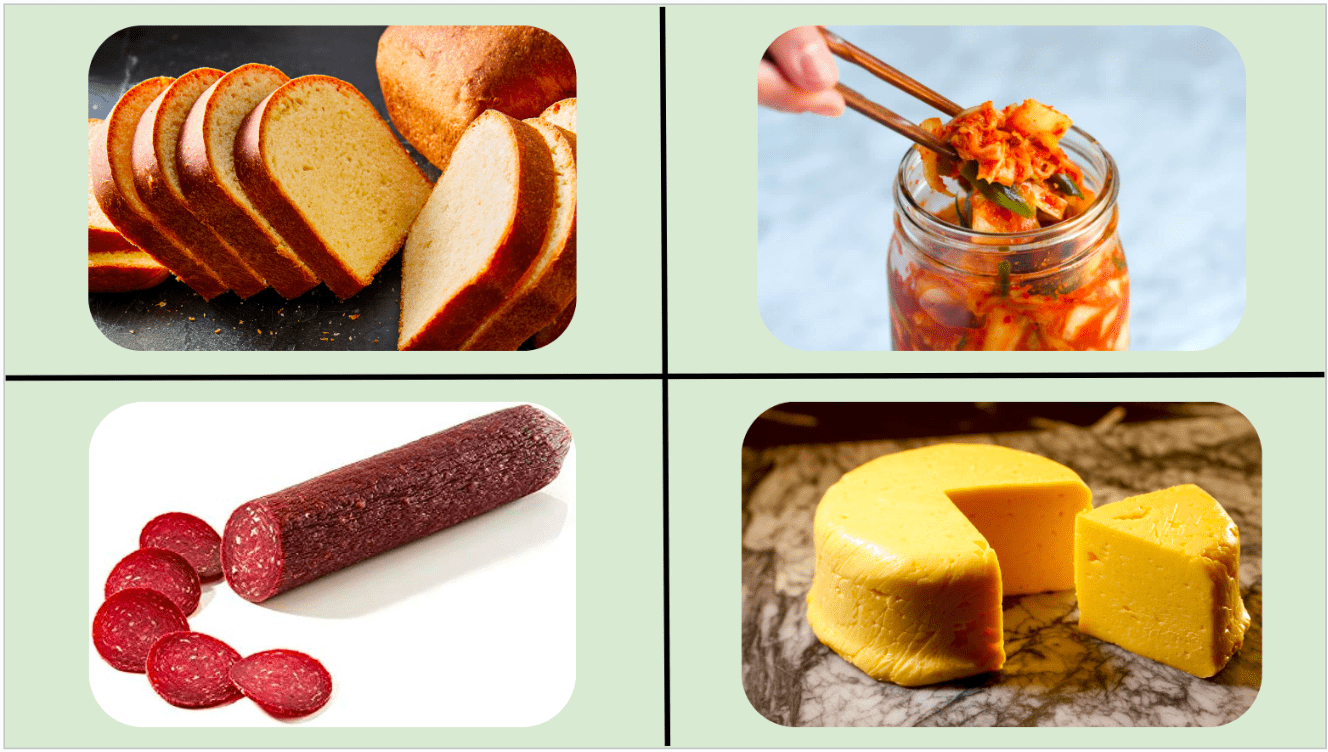
They are all made with the assistance of beneficial microorganisms.